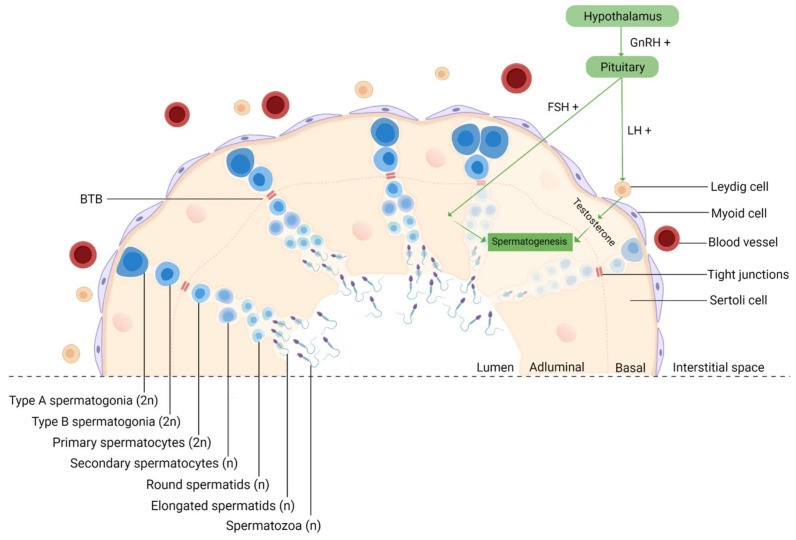Figure 3.
Schematic representation of spermatogenesis in the cross-section of a seminiferous tubule. Spermatogenesis is initiated at puberty by the hypothalamus, which produces GnRH, which, in turn, stimulates the release of FSH and LH at the reproductive tract. LH stimulates Leydig cells to produce testosterone and FSH stimulates Sertoli cells that provide support and nutrition for sperm survival, proliferation, and differentiation [102]. Sertoli cells then initiate the functional responses required for spermatogenesis. Spermatogenesis starts when type A spermatogonia (2n) commit to differentiating into type B spermatogonia. Then, through mitosis, B-spermatogonia (2n) give rise to primary spermatocytes (2n). The latter undergo a long meiotic phase that originates the secondary spermatocytes (n), which ends with spermatids (n) generation [103]. The round spermatids then go through substantial morphological changes during spermiogenesis originating highly specialized spermatozoa through the reorganization of the entire cell, where the nuclear envelope seems to be crucially involved [104,105]. The next event is spermiation, in which mature spermatids are released from the supporting Sertoli cells into the lumen of the seminiferous tubule, and the remainder of the spermatid cytoplasm, known as the residual body, is phagocytosed by the Sertoli cells [106]. However, at this stage, spermatozoa still lack motility. Immotile spermatozoa are then transported into the epididymis where the final steps of maturation occur [107]. GnRH, gonadotropin-releasing hormone; LH, luteinizing hormone; FSH, follicle-stimulating hormone; BTB, blood–testis-barrier; 2n, diploid cell; n, haploid cell, created with Biorender.com (accessed on 2 July 2021).

